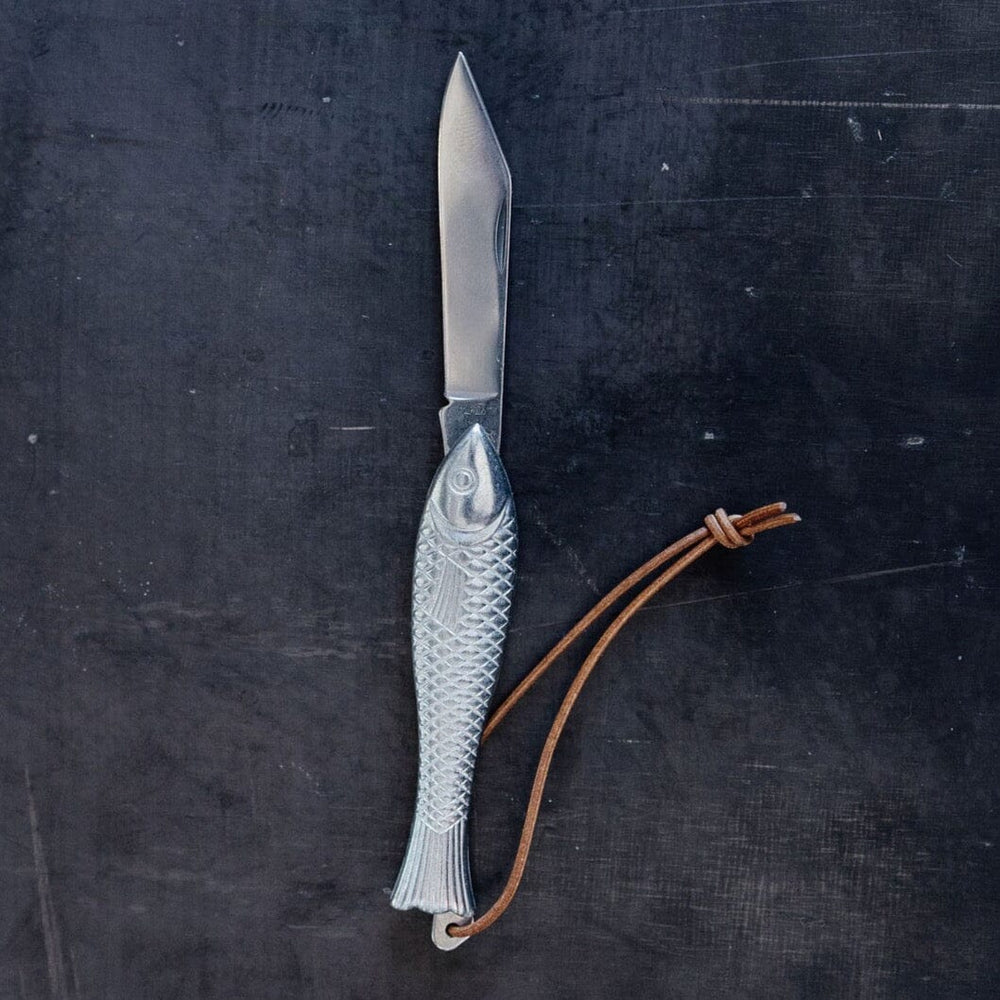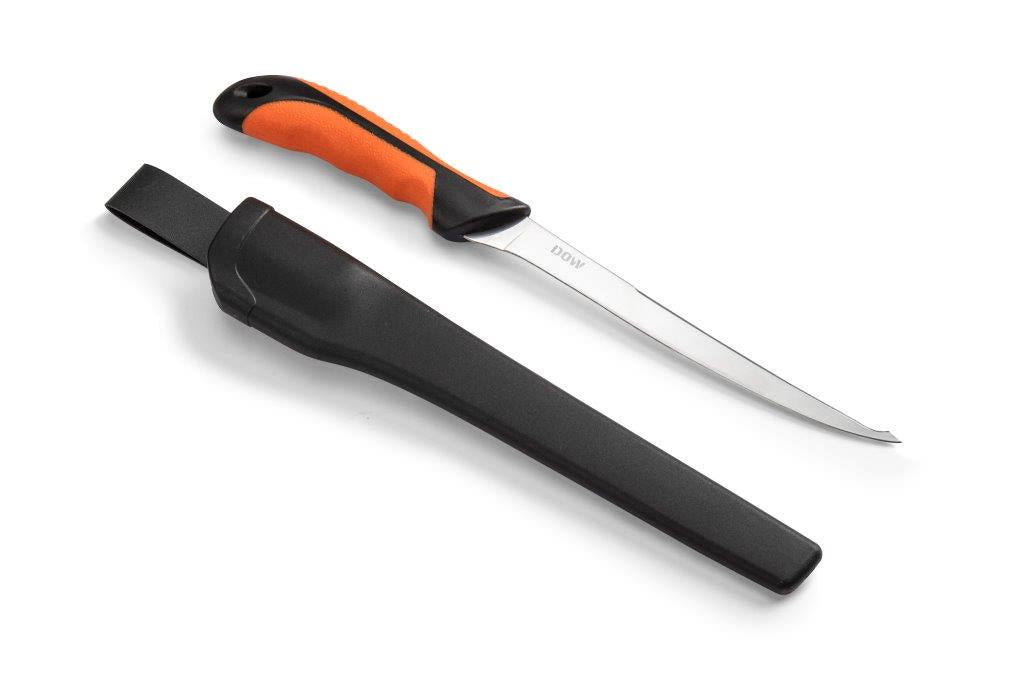Discover the Vital Features to Try To Find in a Top-Quality Fish Knife
When picking a fish knife, numerous key functions demand focus. The blade material substantially influences sturdiness and intensity, while versatility plays an essential function in precision. In addition, the handle style impacts convenience during prolonged usage. Side retention and security features are also essential for useful usage. Comprehending these components will lead customers toward making an enlightened option, yet the subtleties of their significance may not be promptly clear.
Blade Product and Building And Construction
The performance of a fish knife greatly rests on its blade material and construction - fish knife. Top quality fish knives normally include blades made from stainless steel, high-carbon steel, or a mix of both. Stainless-steel is favored for its corrosion resistance and low maintenance, making it ideal for freshwater and deep sea settings. High-carbon steel, while vulnerable to rusting, supplies remarkable sharpness and side retention, appealing to those that focus on reducing efficiency
The building and construction of the blade also plays a vital role in its efficiency. Full-tang blades, which prolong the whole size of the take care of, offer boosted stamina and balance. On the other hand, partial-tang blades may jeopardize durability. Furthermore, the density of the blade must be taken into consideration, as thinner blades enable for more exact cuts, important for fragile fish filleting. Inevitably, a well-constructed blade, using the right materials, is basic for achieving the very best outcomes when preparing fish.
Blade Flexibility and Size
Blade adaptability and length are crucial elements that substantially influence the performance of a fish knife. A versatile blade enables accurate cuts and the capability to steer around bones and skin, making it vital for filleting fish successfully. The correct amount of versatility can boost control, enabling the individual to attain tidy, smooth cuts with very little initiative.
In terms of size, fish knives commonly range from 6 to 9 inches. A longer blade is useful for bigger fish, supplying the reach needed for efficient filleting. Conversely, a shorter blade supplies maneuverability, making it ideal for smaller fish or complex tasks.
Inevitably, the choice of adaptability and length ought to line up with the certain fishing demands and choices of the user. A well-balanced combination of these characteristics makes certain optimum performance, improving the overall fish prep work experience.
Take Care Of Layout and Comfort
When utilizing a fish knife, a well-designed take care of is crucial for making certain convenience and control. The deal with should fit securely in the hand, enabling for a firm grip throughout detailed tasks such as filleting or skinning fish. Materials like rubber, wood, or composite give various levels of convenience and grip, influencing the customer's experience.
Ergonomic features are likewise important; shapes that comply with the all-natural shape of the hand can reduce tiredness during extended usage. Furthermore, the take care of's structure plays a significant function in avoiding slippage, specifically when dealing with wet hands.
Weight distribution is another variable that adds to the general equilibrium of the knife, boosting ability to move. A comfy handle design not just improves performance but also promotes safety and security, as a safe grip decreases the threat of crashes (fish knife). Eventually, a thoughtful manage design can considerably raise the performance of a fish knife in culinary applications
Edge Retention and Developing
While using a fish knife, preserving a sharp edge is important for attaining clean cuts and precise filleting. A high quality fish knife ought to display excellent side retention, enabling it to stay sharp via several usages. This characteristic is often figured out by the kind of steel utilized in the blade; high-carbon stainless-steel is frequently favored due to its equilibrium of solidity and rust resistance.

Security Functions and Sheath Options
When selecting a fish knife, many security functions and sheath choices are crucial factors to consider. A secure and ergonomic handle decreases the threat of slides throughout use, enhancing individual security. Textured holds and finger guards better protect against accidents, allowing for much better control while filleting fish.
Additionally, a blunt suggestion can lessen the danger of slit injuries, making it a safer choice for newbie individuals.
Sheath choices additionally play an important role in security. A properly designed sheath safeguards the blade, protecting against unintentional cuts when the knife is stored or moved. Sheaths made from resilient products, such as nylon or tough plastic, offer added defense against environmental elements.
Some sheaths come with belt clips or loops, guaranteeing the knife is quickly accessible while continuing to be safe and secure. Inevitably, focusing on security functions and sheath choices contributes considerably to the overall functionality and customer experience of a fish knife.
Regularly Asked Concerns
What Is the Ideal Brand Name for Fish Knives?
The most effective brand name for fish knives frequently differs by preference, yet prominent names like Wüsthof, Victorinox, and Shun are regularly suggested for their sturdiness, workmanship, and intensity, making them leading choices among cooking fanatics and professionals alike.
Can Fish Knives Be Utilized for Various Other Types of Fish?
Fish knives can undoubtedly be utilized for other sorts of fish. Their design and intensity make them functional sufficient for different fish types, enhancing the overall experience of filleting and preparing different kinds of fish and shellfish.

Exactly how Do I Tidy and Maintain My Fish Knife?
To cleanse and keep a fish knife, wash it with warm water after use, gently scrub with mild soap, dry thoroughly, and store in a protective sheath to avoid damages and corrosion. Regular honing is essential.
Are There Fish Knives Especially for Left-Handed Users?
Yes, there are fish blades developed especially for left-handed individuals. These knives feature reversed blade angles and ergonomic handles, guaranteeing comfort and performance for left-handed people while filleting and preparing fish. Quality alternatives are offered from various manufacturers.
What Is the Cost Array for Quality Fish Knives?
Quality fish knives normally range from $20 to $150, depending on materials, brand track record, and workmanship. Higher-end options may include specific layouts and superior comfort designs, while affordable choices still use acceptable efficiency for casual individuals.
The efficiency of a fish knife largely hinges on its blade product and building and construction. Top notch fish blades typically include blades made from stainless steel, high-carbon steel, or a mix of both. Blade flexibility and size are essential elements that greatly affect the efficiency of a fish knife. Fish knives can indeed be made use of for various other kinds of fish. These knives include reversed blade angles and ergonomic manages, making sure comfort and performance for left-handed individuals while filleting and preparing fish.